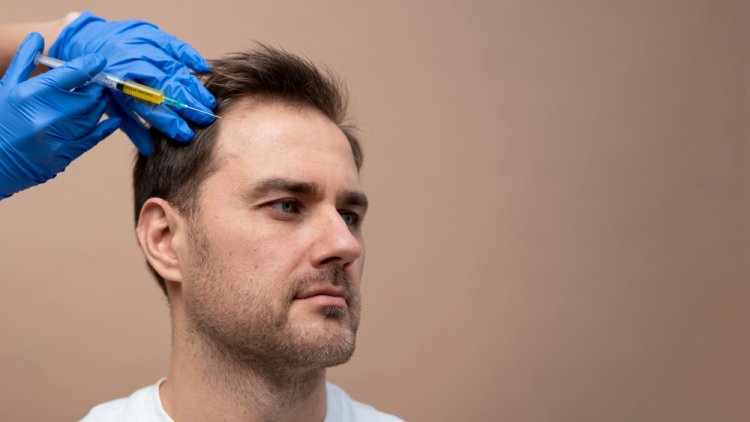Become a Specialist: The Path to PRP Hair Restoration Training and Certification
Share this Post to earn Money ( Upto ₹100 per 1000 Views )

Introduction: Why Hair Restoration Is Gaining Ground
Hair loss is no longer just a cosmetic concern—it’s a clinical conversation. Patients from all walks of life are turning to medical professionals for options that feel safe, natural, and effective. PRP hair restoration training offers clinicians a way to meet this growing demand using a patient’s own biology. For those in medical aesthetics, it’s a valuable service to add—one that bridges science and appearance in a powerful way.
What PRP Hair Restoration Training Involves
Training in PRP for hair loss isn’t just about technique—it’s a structured path that helps professionals understand both the science and the patient experience. A standard PRP hair restoration training program typically includes:
1. Core Theory Modules
-
Understanding the causes of hair thinning in men and women
-
How PRP works to support follicular activity
-
Scientific literature on efficacy and safety
2. Clinical Skills and Injection Techniques
-
Scalp anatomy and vascular mapping
-
PRP preparation: blood draw, centrifugation, and PRP separation
-
Step-by-step methods for safe and precise injections
3. Certification and Safety
-
Patient intake protocols and medical history evaluation
-
Sterile technique and post-care guidance
-
Managing patient expectations and follow-up plans
By the end of a complete training course, clinicians are equipped to not only perform the treatment but to evaluate candidates, set realistic goals, and monitor outcomes.
How PRP Supports Hair Growth: A Quick Look at the Science
Platelet-rich plasma is derived from a small amount of the patient’s own blood. After spinning it in a centrifuge, the concentrated platelets are collected and re-injected into areas of thinning. These platelets release growth factors that signal the body to repair and renew tissue.
While PRP is not a replacement for hair transplants or pharmaceutical solutions, it’s a popular choice among patients looking for something natural with minimal downtime. Consistency and proper technique are key—making prp hair restoration training essential for quality outcomes.
Key Techniques and Considerations for PRP Hair Treatment
Whether you're new to aesthetics or expanding your practice, mastering the technical aspects of PRP for hair loss involves attention to detail:
-
Scalp Mapping: Understanding where and how to inject depending on the pattern and degree of hair thinning
-
Volume Management: Knowing how much PRP to inject per zone
-
Needle Selection: Choosing the right gauge and depth for comfort and effectiveness
-
Session Timing: Determining treatment intervals and maintenance plans based on patient response
A strong prp hair treatment training course will walk through these variables and allow hands-on practice under expert supervision.
Combining Knowledge with Aesthetic Skill
One of the most important skills clinicians develop in PRP courses is the ability to balance scientific understanding with visual and tactile sensitivity. Injecting into the scalp is different from facial or musculoskeletal procedures—it requires both a firm grasp of technique and a feel for patient comfort.
Beyond injecting, clinicians also need to understand how hair cycles work, how to assess photographic progress, and how to speak with patients about what they may or may not expect.
Patient Outcomes: Real-World Insights
While PRP doesn’t produce overnight changes, patient interest remains strong because of its safety and potential benefits. Providers trained in proper technique often report steady client retention, especially when they take time to personalize treatment plans.
Clinics frequently showcase before-and-after images to illustrate patient journeys. Without promising specific results, these examples help prospective clients understand how consistent sessions may support their hair health over time.
The Training Journey: From Classroom to Certification
Most advanced training providers design their prp hair restoration training programs in stages:
-
Online Pre-Work: Video lectures, articles, and quizzes to build knowledge before hands-on sessions
-
Live Workshops: Practice drawing blood, preparing PRP, and performing injections on models
-
Assessment & Certification: Formal evaluations, instructor feedback, and post-training support
Certification not only increases confidence but ensures compliance with local medical regulations—an important point in aesthetic practices where patient trust is everything.
Cross-Training with Facial Aesthetics: A Natural Extension
Many professionals entering PRP hair therapy come from a facial aesthetics background. In fact, platelet rich plasma face treatment and PRP for hair loss share the same biological foundation and preparation methods.
Offering both services creates synergy within a clinic. Patients who try PRP facials are often open to hair treatments, and vice versa. Combining both opens up more value per client, increases bookings, and improves patient retention.
Business Impact and Practice Growth
Adding hair restoration to a practice can be both clinically fulfilling and commercially sound. Here’s why trained professionals find it valuable:
-
Growing patient interest in natural alternatives to hair transplants
-
Treatment plans typically span multiple sessions, creating consistent revenue
-
Word-of-mouth referrals from satisfied patients
-
Minimal equipment investment compared to other aesthetic treatments
For solo practitioners and group practices alike, this training helps differentiate service offerings in a competitive space.
Conclusion: A Valuable Step for the Modern Practitioner
Learning PRP for hair restoration isn’t just a clinical upgrade—it’s a practical, in-demand skill that aligns with patient interest in natural solutions. With solid science, safe techniques, and a growing base of interested clients, this training is a strategic move for professionals ready to expand their services.
Regenerative Medicine Academy offers expert-led PRP hair restoration training programs, designed for healthcare providers serious about delivering high-quality outcomes. Courses include theory, live practice, and post-training support to help you confidently integrate PRP services into your clinic.
Visit Regenerative Medicine Academy to explore upcoming sessions and start your certification journey today.















